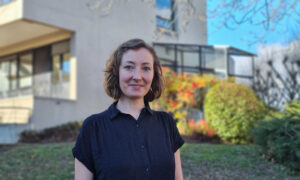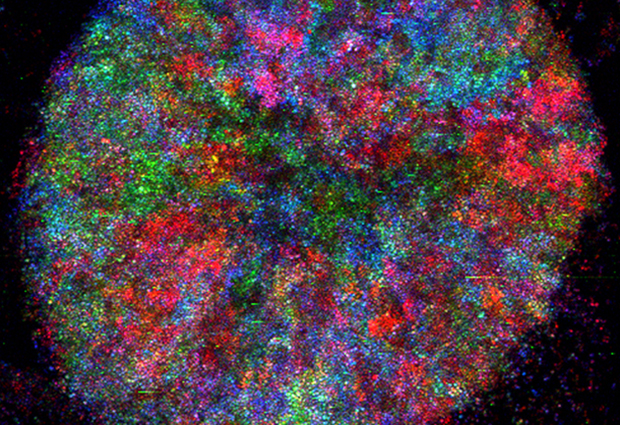
Read the latest Issue
Markus Ralser, upcoming EMBO workshop speaker, on how metabolism brought chemistry to life

According to Descartes’ famous line, ‘to think is to be’. For modern-day biologists, it’s increasingly a case of ‘to metabolise is to be’. Markus Ralser, who will be a speaker at the EMBO Workshop ‘Experimental Approaches to Evolution and Ecology Using Yeast and Other Model Systems’ at EMBL this October, shares how a fluke finding gave him insights into the origins of life.
“As a biochemist, you could say the definition of life is metabolism,” Ralser quips. Metabolism is the set of chemical reactions within cells that sustain life. It is a complex and dynamic network of reactions that allows organisms to grow, reproduce, maintain their structures and respond to their environments. Researchers’ interest in metabolism is growing, with the advent of techniques like metabolomics – the systematic study of metabolic processes and products. In his lab at the Francis Crick Institute, Ralser is trying to reconstruct the rules behind cell metabolism and – with a bit of luck – how life began.

Together with his team, Ralser is using a simple model – yeast – to answer the very complicated question of how metabolism works. Another question that has long intrigued him is why metabolism works the way it does, and how it arose in the first place. This question of where metabolic networks come from was in the back of Ralser’s mind for a few years, until Markus Keller, then a postdoc in Ralser’s lab at the University of Cambridge, made a serendipitous discovery.
While preparing the media – the mix of nutrients in which cells are grown in the lab – for their yeast cells, Keller noticed something unexpected: the media contained pyruvate. Pyruvate is the end product of an important metabolic reaction sequence, called glycolysis, by which cells break down glucose into smaller sugars and obtain energy. Since there were no cells in the media, the sugars must have interconverted in the absence of enzymes – proteins that cells use to speed up chemical reactions. After some quality checks, the researchers realised the metabolite had formed during a routine heating of the growth media. Intrigued, Ralser and Keller set out to determine how exactly the pyruvate had formed.
Keller replicated the reactions and realised that they didn’t just form pyruvate; a complex network of chemical reactions had spontaneously occurred. This network was very similar to the glycolysis and the pentose phosphate pathways, two reaction systems – or variants thereof – which are central to our cells. Pentose phosphate is one of the building blocks of DNA and RNA, the molecules that store genetic information, while the glycolysis pathway is central to generating energy and producing the building blocks for life.
Although many details are still unclear, life – and metabolism – probably came into existence from simple environmental reactions in the early Archaean Eon, some four billion years ago. The Archaean seas were very different from the ones we know today, so Ralser approached Alexandra Turchyn, from the Department of Earth Sciences at the University of Cambridge, who is an expert on the world’s early oceans. In an extensive collaboration, the two labs figured out what had replaced the metabolic enzymes in the reactions in the growth media: ferrous iron. Iron is found at high concentrations in Archaean sediments and believed to have been highly concentrated in oceans and other aquatic environments of the Archaean world. The reactions Ralser and Keller had found in the growth media – glycolysis and the pentose phosphate pathways – hence replicate the reactions sugar phosphates undergo in the presence of ferrous iron.
“That’s how we think metabolism might have started,” explains Ralser. The high concentration of metals in the Archaean seas formed a chemical landscape that enabled a series of chemical reactions that we now find in cells. “We can reconstruct quite a lot of cells’ metabolism without enzymes,” Ralser points out. “This hints that metabolism emerged from a chemistry that did already exist before cells were able to pass on genetic information.” Later, these reactions were exploited by our cells to interconvert carbohydrates and eventually became the basis of life’s metabolism.
Since Earth’s atmosphere now contains a lot more oxygen, there aren’t many environments on Earth where iron is as abundant as it was in the ancient Archaean seas. In contrast, the inside of cells is quite rich in many metals like iron. So why do cells expend so much energy making their inner chemistry different from the world around them? To Ralser, a likely answer is that “cells spend a lot of energy generating the chemical environment necessary to exploit their genetic machinery and to conduct metabolism. It is highly likely that their interior has been shaped by the environments where they started to evolve.”
Markus Ralser is a Group Leader at the Francis Crick Institute and is affiliated with the Department of Biochemistry, University of Cambridge. His lab studies the metabolic networks inside the cell and how cells exchange metabolites. He will be a speaker at the EMBO Workshop ‘Experimental Approaches to Evolution and Ecology Using Yeast and Other Model Systems’, hosted at EMBL Heidelberg from 17-20 October.
Looking for past print editions of EMBLetc.? Browse our archive, going back 20 years.
EMBLetc. archive